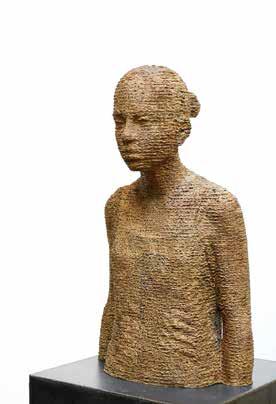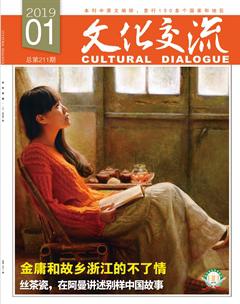Bruno Walpoth Showcased in Hangzhou
Lin Shaoqing Zhou Zuni
Bruno Walpoth is one of the most popular western sculptors in China. Some Chinese have even flown to Europe in order to see his sculptures at exhibitions. Like Michelangelo who saw human shapes in marbles and liberated them out of stone, Bruno Walpoth sees human figures in wood and brings them out into artworks.
was held at Zhejiang Art Museum in Hangzhou from November 20 to December 23, 2018. It was the first stop of a series of his exhibitions across Asia. The solo art show of the Italian sculptor was jointly hosted by Zhejiang Art Museum and the Art Museum of China Academy of Art and assisted by General Consulate of Italy in Shanghai.
It was the most comprehensive and biggest and most complete solo exhibition of . On the show were 47 pieces/sets of human wood sculptures, including 25 created especially for this exhibition. Also on exhibition were some drawings, bronze and paper sculptures, rarely seen in previous exhibitions of the masters artworks. A short documentary was screened at the museum to give visitors a visual impression of the artist.
In tandem with the exhibition, China Academy of Art Press on November 25 launched Bruno Walpoth, an album of photos of 77 sculptures and 18 sketches, presenting the artist in different phases of his career since 1984. It took nearly a year to take all the photos for the book. At the first sight of the book in Hangzhou, the sculptor was so excited that he wept and was sleepless that night.

《皮埃爾》Pierre, a sculpture by Bruno Walpoth

《纳蒂娅》Nadia, a sculpture by Bruno Walpoth
Born in the Val Gardena region of Italy, Walpoth grew up in a renowned woodcarving culture and has continued in the footsteps of his family members who themselves were master artisans.
He talked with journalists and visitors at the opening ceremony on the afternoon of November 28. He looked slender, tender, sincere and simple, and a little bit nervous even though he was doing his best to be talkative.
“Silent Emotion” described both Walpoth and his wood sculptures perfectly. Silence is a big part of his life. He chose to present himself in two very short films to tell the visitors how he works every day. He works alone, without any assistant. He single-handedly does all the work, from cutting a tree, removing the barks from the wood, carrying the wood into his studio to adding the final touch to a sculpture. Walpoth typically spends two months on each life-sized sculpture. More often than not, he works with a model. A cat comes and goes. It takes a truly masterful—and patient–hand to recreate the human body from a single piece of wood. His models are neighbors in the village where he lives and his friends. In the preparatory phase, he studies his models carefully and makes a small clay sculpture. He then stares at the wood, thinking and referring to the model and the clay sculpture now and again. He does not make any drawings on the wood itself.
“Beginning is the most difficult. Standing in front of the wood, I often have the anxiety that I may not be able to make it,” said the artist. But as soon as the work starts, the anxiety vanishes. A human form gradually appears from the wood. Before cutting and carving is over, he applies white color to the sculpture in order to sooth his eyes and give a final touch to the sculpture. He works to make skin texture look real. His flawlessly carved creations of the human form are as realistic as they are striking—so much so that from a distance, it is nearly impossible to tell that his figures are not living, breathing beings.
Chinese artists and fans had been looking forward to this exhibition for a long time. In 2015, Bruno Walpoth visited Zhejiang Art Museum, China Academy of Art in Hangzhou and Xian Academy of Fine Arts in Xian in the northwest of China. He gave lectures and participated in studio activities. He caused a stir among art students.
This time he created 25 sculptures for the exhibition. was the last piece he created before he left Italy for China. He made a special sculpture in Hangzhou. Long before Walpoth came to Hangzhou, Zhejiang Art Museum found 20 candidates, shortlisted from “Looking for Chinese Muse”, a public art project, to find a model for Bruno Walpoth. The Italian sculptor picked Xiang Yejing, a professional model, as his poser. “I was able to imagine how the final work of art would look like at the first sight of the model. This was the sixth sense,” explained Walpoth.
He brought over 50 sculpting tools from Italy in order to create this special sculpture in Hangzhou. It took him two weeks to complete. Sometimes he didnt sleep. He was satisfied with the creation.

